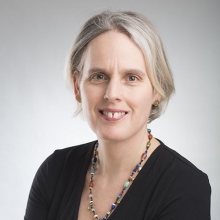INCREASING THE FLOW OF CAPITAL FOR GOOD - INVESTING AND GIVING

When an organisation tries to achieve some social good, they won’t know whether they are achieving it unless they measure the impact of that work.
This can be extremely tough to do. But it is also extremely important – not least in the social investment world, the whole premise of which is that both social and financial returns are delivered.
So how can we encourage funders, donors, charities and social enterprises to get to grips with it?
There are two good places to start. We need to stop over-complicating impact measurement (the fact that it can be difficult isn’t the same as it always being hugely complex). And we need to pool resources – we are the ‘social’ sector after all.
At New Philanthropy Capital (NPC), our mantra is ‘measure what you treasure’. Charities should choose their priorities and measure their impact, and try and make sure this is proportionate to their resources.
We find a theory of change is a good starting point, from which charities can then hang a measurement framework. A theory of change links together those outcomes which lead to achieving your chosen goal, like a map towards the thing you want to achieve.
But think hard about what goes into that framework. Don’t overburden yourself, and certainly don’t set yourself up to fail. Has somebody else already proven the causal links you’re looking at? Is best practice already known? For example, we know the impact that parental engagement in learning can have on academic achievement. If this is already established, your impact measurement can focus instead on the quality of the intervention, and the best ways to improve the way it is delivered.
At the other end of the spectrum, some charities will start closer to scratch. It may not be clear what beneficiaries want or need, or how best to help. What is most important, for instance, to support new immigrant groups arriving in a new location? Your focus in this case should be on measuring and understanding the demand for what you are doing, and working out what is going on.
Everyone, ultimately, is on the hunt to find out what works. The process of understanding this can be speeded up if social organisations share their successes and their failures.
Even among those of us who worry there is too little impact measurement, we should be wary of now demanding too much. Not all organisations should be held to the same standard.
What is appropriate for a start-up is unlikely to be the same for an established venture looking to scale-up: while a new, small organisation should probably focus on collecting data to prove their effectiveness, larger charities might be thinking about outcomes data that can be benchmarked against external groups.
There’s a lesson here for funders, too. Philanthropists should feel comfortable asking for a clear record of what their money is achieving, but they should also be realistic and proportionate in what they ask for. Ideally, funders should make sure the data they request also has use for the organisation itself.
Too often impact measurement has been seen either as a burden, or so obvious it doesn’t need doing. As a result, we have ended up a decade into social investment with no clear idea of the impact that has been generated by a whole realm of programmes.
Some recent initiatives have targeted this knowledge gap, like the Impact Readiness Fund, which gives ventures money to improve their impact measurement, ahead of bidding for contracts or social investment.
So how can we move the sector along and improve practice so that in ten years’ time funders know the impact of their grants and investments? We must leverage the little resources we have.
We must beg, steal and borrow. Work together. Import ideas from other sectors. Take risks – many of the things that can alarm elements of the sector.
There are lots of initiatives that are trying to do this but we need more. We need shared frameworks, standard metrics and outcomes and a willingness to adopt and try out the ideas of others.
I attended the Critical Mass conference in London late last year, and one of the main points I took away was the need to work with others to achieve social change. It was summed up in a presentation from a social enterprise that had been unsuccessful in raising funding, which it explained was ‘because we saw ourselves as a good provider we were unwilling to work with others’.
How many of us are guilty of this? Yet if we are to have a chance of contributing to better social outcomes, we need to prioritise measuring and communicating our successes and failures. Only by working with others can we maximise our small footprint.
This article first appeared in Philanthropy Impact Magazine Issue 11.





